With its spare, circular story line, the ability to crystallise so much of what it is about in its visuals, and an exceptional cast delivering the most precise of spoken lines, The Ice Storm is cinema at its most immaculate. Everything from Mark Friedberg’s wonderfully researched production design though to Frederick Elmes’ crisp cinematography and Mychael Danna’s wintry wind-instrument-based score is perfectly conceived. Undoubtedly, it confirms its director Ang Lee and his regular producer/screenwriter James Schamus as a world-class filmmaking team.
Based on Rick Moody’s novel written in 1994, it is also one of the most intelligently observed appraisals of the 70s and, more precisely, of the watershed year of 1973. The reference points are brilliantly assembled – toe socks, and the television show Divorce Court and Philip Roth’s When She Was Good are ever so briefly glimpsed – and used not as decorative retro accessories but as means of commenting on the dislocation of the moment and the confusion of those trying to live through it. Importantly, obvious historical referents are threaded through but don’t dominate the film. Nixon and Watergate are as much part of the texture as crocheted tank tops. (Though a hilarious scene showing the sexually precocious 14-year-old Wendy wearing a Nixon mask while she and Mikey attempt sex makes a somewhat oblique but wry comment on the political shenanigans of the era.
On the other hand, key 1973 phenomena are wisely left implicit. For example, acerbic Janey Carver’s calculated view of sex surely signals that she has mastered the ‘zipless fuck’ of Erica Jong’s imagination. Indeed, The Ice Storm is about bourgeois lives that are cluttered up with goodies and ideas to be tried on for size. The more conservative Hoods, whose home is a discordant mix of two-or-so decades’ furnishings, are straining to swing with the rest of them, an effort signalled equally by the buying of new chinaware and Elena’s purchase of proto-New Age philosophies. In contrast, the Carvers, with their cool Philip Johnson-style glass house that ostensibly signals openness about their lives, have severed themselves from a past predicated on picket-fenced ideals.
Architecture is essential to the film and director Lee has a rare skill: the ability to communicate via the spatial relationships between the characters and the things around them. A brief scene depicts Ben at work in the city, a bored man in a board meeting, sitting as stiffly as the skyscrapers glimpsed in the window behind him. His sense of discomfort with power and himself is neatly secured in this wordless moment. (By way of contrast, Janey’s voracious appetite for domination is economically conveyed when she toys with her son’s cowboy whip out in their back garden, a delicious moment which Sigourney Weaver makes her own.)
Perhaps the most symbolic and dangerously gaping space of them all in the film is Mikey’s haunting ground, the swimming pool empty of water and collecting dry leaves. Like some waiting mass grave, it implies the deep dead-end of affluence while firmly rooting the film in John Cheever country (Frank and Eleanor Perry’s adaptation of The Swimmer of 1968 would make an interesting double bill with The Ice Storm, as would the 1970 Perry movie, Diary of a Mad Housewife). The empty pool also augurs the tragedy to come, The Ice Storm’s coup de grâce that finally underscores the fragility of relationships and life itself.
Lizzie Francke, Sight and Sound, February 1998
The Ice Storm was brought to the attention of producer James Schamus by his wife, literary scout Nancy Krikorian, who knew Rick Moody from Columbia University’s MFA program. ‘It’s an astonishingly cinematic book,’ says Schamus. ‘But, because of its truly literary qualities, people may have missed its extraordinary cinematic possibilities.’
Schamus showed the book to Ang Lee, with whom he and partner Ted Hope had already made four films. Despite the obvious appeal of Moody’s comedy of familial errors for the creator of The Wedding Banquet, Lee says what attracted him to the book was its climax: the scene where Ben Hood makes a shocking discovery in the ice, followed by the emotional reunion of the Hood family on the morning after the storm. ‘The book moved me at those two points,’ says Lee. ‘I knew there was a movie there.’
Lee signed on to make and film and it fell to Schamus, while he and Lee were in England making Sense and Sensibility, to turn Moody’s very literary novel into a screenplay that would serve the director’s purposes. (Lee and Schamus had previously worked together on the writing of Lee’s first three films, Pushing Hands, The Wedding Banquet and Eat Drink Man Woman.)
The Ice Storm, which is set in the High Seventies, is a period piece, like Ang Lee’s previous film: an adaptation of Jane Austen’s Sense and Sensibility that was nominated for seven Academy Awards and won one, for Emma Thompson’s screenplay. ‘I felt this was just the opposite of Sense and Sensibility,’ Lee says. ‘In Sense and Sensibility the social code wants you to be rational and good, and the characters want to be bad; in The Ice Storm the social code wants you to be bad, and actually they’re not so bad after all – they still want to be good!’
In other ways, The Ice Storm is a new departure for the filmmaker. In Lee’s first three films the characters are breaking with old ways, but the values of tradition are movingly embodied by the wise, dignified father played in each film by Sihung Lung. (Lee jokingly refers to those films as his ‘Father Knows Best’ trilogy.) ‘Wise’ and ‘dignified’, however, are hardly the words to describe The Ice Storm’s befuddled anti-hero Ben Hood, or any of the other parents in the film, who are too preoccupied with their own need for ‘self-realisation’ to set an example for their children.
‘The structure of society is breaking down more in this film than in my early films,’ Lee says. ‘The situation is more chaotic. The whole nation is in an adolescent period, experimenting with new things, new rules – even the adults are behaving like adolescents.’
‘At the same time, the period portrayed is innocent and good, because people are rebelling against old rules and the old order. The concept of the New Age looks a little funny today, but the characters in the film are reaching out for something. We’re jaded now, while the people of that era were very fresh and bold about reaching for their limits.
‘What they encounter in the process is human nature, and the ice storm, which gives you a little more respect for Nature. It turns out that we’re not that free after all.’
Production notes
The Ice Storm
Director: Ang Lee
Production Companies: Twentieth Century Fox Film Corporation, Fox Searchlight Pictures, Good Machine
Producers: Ted Hope, James Schamus, Ang Lee
Associate Producers: Alysse Bezahler, Anthony Bregman
Unit Production Manager: Alysse Bezahler
Production Supervisor: Nancy Kriegel
Production Co-ordinator: Beth A. Boyd
Location Supervisor: Declan Baldwin, Featureline Inc
Location Co-ordinator: Shannon Bowen
Post-production Supervisors: Anthony Bregman, Kelly Miller
1st Assistant Directors: Stephen Wertimer, James W. Murray Jr
2nd Assistant Directors: Lisa Rowe, Brian O’Kelley
2nd 2nd Assistant Director: Linda Perkins
Script Supervisor: Mary Cybulski
Casting: Avy Kaufman
Casting Associate: Julie Lichter
Screenplay: James Schamus
Based on the novel by: Rick Moody
Director of Photography: Frederick Elmes
2nd Unit Photography: Frank Prinzi
Camera Operators: Phil Oetiker, John Sosenko
Steadicam Operators: Andy Casey, Rick Rafael
Digital Visual Effects: Balsmeyer & Everett Inc
Special Effects Supervisor: John Ottesen
Train Miniatures: Sessums Engineering, Jack Sessums, Gary Maxwell, Michael Sajbel
Editor: Tim Squyres
Production Designer: Mark Friedberg
Art Director: Bob Shaw
Set Decorator: Stephanie Carroll
Scenic Artists: Eric Bart, Steve Barth, Steve Caldwell, Marshall Carbee, Lauren Doner, Judy Evans, Michael Greene, Christopher Hébel, Richard Jones, Eugene Kagansky, Arcady Kotler, E. Reynold Maher, Vietta Maher, Michael Miles, Don Nance, John Paul, Cheryl Stewart
Storyboards: Brick Mason
Costume Designer: Carol Oditz
Associate Costume Designer: Elizabeth Shelton
Wardrobe Supervisors: Melissa Adzima-Stanton, Tom Stokes
Make-up Artists: Michael Bigger, James Sarzotti
Make-up (Ms Weaver): Linda Devetta
Hairstylist: Aaron F. Quarles
Titles: NY Bureau
Opticals: The Effects House
Music: Mychael Danna
Gamelan Music: Evergreen Club Gamelan Ensemble, Bill Brennan, Mark Duggan, Paul Houle, Blair Mackay
North American Native Flutes: Daniel Cecil Hill
Conductor: Christopher Dedrick
Orchestrations: Jamie Hopkings
Music Supervisor: Alex Steyermark
Music Editor: Pat Mullins
Score Recorder/Mixer: Brad Haehnel
Sound Co-ordinator: Ghretta Hynd
Sound Mixer: Drew Kunin
Re-recording Mixer: Reilly Steele
Supervising Sound Editor: Philip Stockton
Dialogue Editor: Fred Rosenberg
Sound Effects Designer: Eugene Gearty
ADR Recordists: David Boulton, Sound One, Andy Kris, Inc Spin Cycle Post
ADR Editor: Marissa Littlefield
Foley Supervisor: Bruce Pross
Foley Artist: Marko Costanzo
Foley Editors: Frank Kern, Kam Chan
Stunt Co-ordinators: G.A. Aguilar, Douglas Crosby
Stunts: Jill Brown, Danny Downey, Lizzie Olesker, Susan Trout
Cast
Kevin Kline (Ben Hood)
Joan Allen (Elena Hood)
Henry Czerny (George Clair)
Adam Hann-Byrd (Sandy Carver)
David Krumholtz (Francis Davenport)
Tobey Maguire (Paul Hood)
Christina Ricci (Wendy Hood)
Jamey Sheridan (Jim Carver)
Elijah Wood (Mikey Carver)
Sigourney Weaver (Janey Carver)
Kate Burton (Dorothy Franklin)
William Cain (Ted Shackley)
Michael Cumpsty (Philip Edwards)
Maia Danziger (Mrs Gadd)
Michael Egerman (pharmacist)
Christine Farrell (Marie Earle)
Glenn Fitzgerald (Neil Conrad)
Tom Flagg (train conductor)
Jonathan Freeman (Ted Franklin)
Barbara Garrick (weather reporter)
Dennis Gazomiros (Stephen Earle)
John Benjamin Hickey (Mark Boland)
Katie Holmes (Libbets Casey)
Allison Janney (Dot Halford)
Byron Jennings (Pierce Sawyer)
Colette Kilroy (Sari Steele)
Ivan Kronenfeld (Jack Moellering)
Daniel McDonald (weatherman)
Miles Marek (Mr Gadd)
Donna Mitchell (Maria Conrad)
Barbara Neal (Helen Wentworth)
Nancy Opel (Claudia White)
Larry Pine (Dave Gorman)
Marcell Rosenblatt (Mikey’s teacher)
Wendy Scott (pharmacy attendant)
Evelyn Solann (woman in pharmacy)
Jessica Stone (Marge)
Sarah Thompson (Beth)
Scott Wentworth (Paul’s teacher)
Rob Westenberg (Rob Halford)
USA 1997
113 mins
Digital (restoration)
A StudioCanal re-release
SIGHT AND SOUND
Never miss an issue with Sight and Sound, the BFI’s internationally renowned film magazine. Subscribe from just £25*
*Price based on a 6-month print subscription (UK only). More info: sightandsoundsubs.bfi.org.uk

BFI SOUTHBANK
Welcome to the home of great film and TV, with three cinemas and a studio, a world-class library, regular exhibitions and a pioneering Mediatheque with 1000s of free titles for you to explore. Browse special-edition merchandise in the BFI Shop.We're also pleased to offer you a unique new space, the BFI Riverfront – with unrivalled riverside views of Waterloo Bridge and beyond, a delicious seasonal menu, plus a stylish balcony bar for cocktails or special events. Come and enjoy a pre-cinema dinner or a drink on the balcony as the sun goes down.
BECOME A BFI MEMBER
Enjoy a great package of film benefits including priority booking at BFI Southbank and BFI Festivals. Join today at bfi.org.uk/join
BFI PLAYER
We are always open online on BFI Player where you can watch the best new, cult & classic cinema on demand. Showcasing hand-picked landmark British and independent titles, films are available to watch in three distinct ways: Subscription, Rentals & Free to view.
See something different today on player.bfi.org.uk
Join the BFI mailing list for regular programme updates. Not yet registered? Create a new account at www.bfi.org.uk/signup
Programme notes and credits compiled by Sight and Sound and the BFI Documentation Unit
Notes may be edited or abridged
Questions/comments? Contact the Programme Notes team by email

